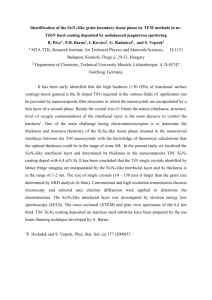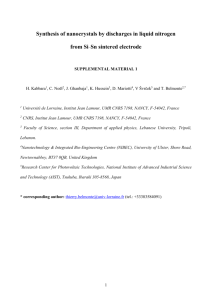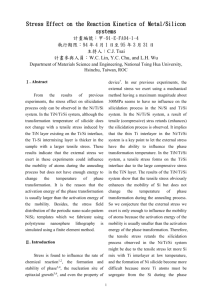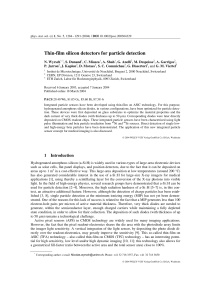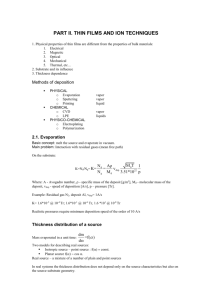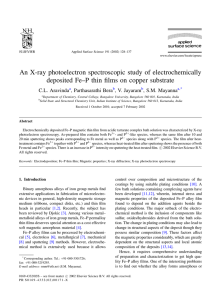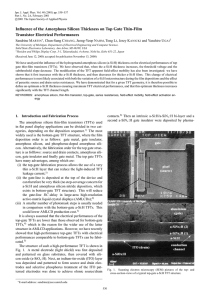L13-06755R1-Supplementary_material
advertisement
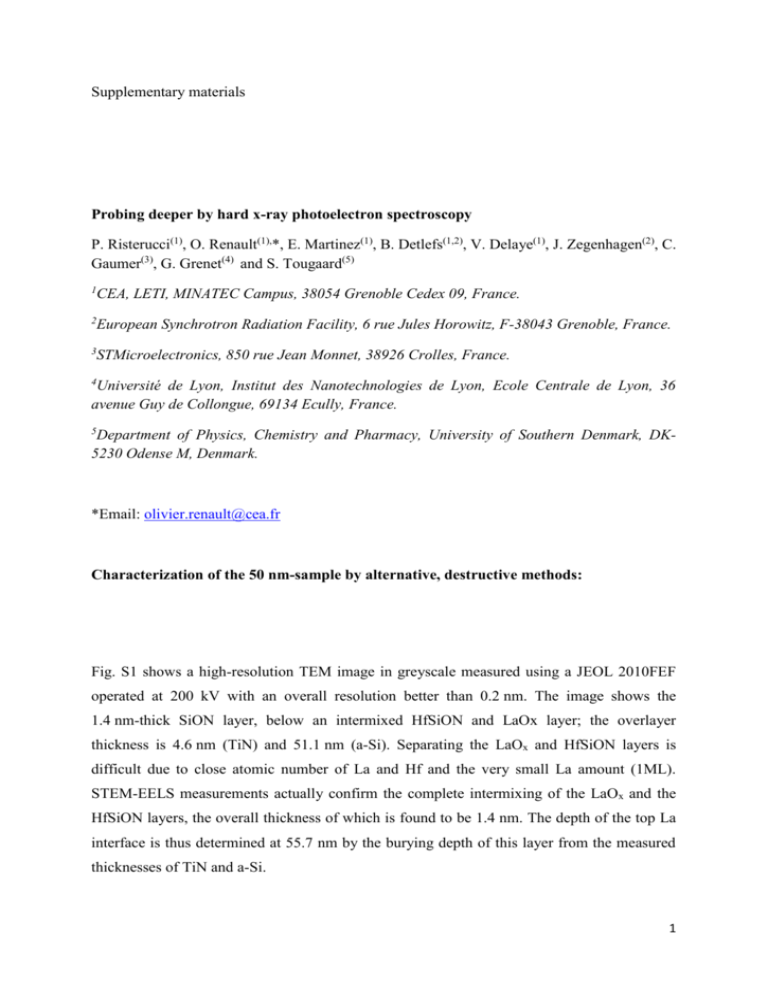
Supplementary materials Probing deeper by hard x-ray photoelectron spectroscopy P. Risterucci(1), O. Renault(1),*, E. Martinez(1), B. Detlefs(1,2), V. Delaye(1), J. Zegenhagen(2), C. Gaumer(3), G. Grenet(4) and S. Tougaard(5) 1 CEA, LETI, MINATEC Campus, 38054 Grenoble Cedex 09, France. 2 European Synchrotron Radiation Facility, 6 rue Jules Horowitz, F-38043 Grenoble, France. 3 STMicroelectronics, 850 rue Jean Monnet, 38926 Crolles, France. 4 Université de Lyon, Institut des Nanotechnologies de Lyon, Ecole Centrale de Lyon, 36 avenue Guy de Collongue, 69134 Ecully, France. 5 Department of Physics, Chemistry and Pharmacy, University of Southern Denmark, DK5230 Odense M, Denmark. *Email: olivier.renault@cea.fr Characterization of the 50 nm-sample by alternative, destructive methods: Fig. S1 shows a high-resolution TEM image in greyscale measured using a JEOL 2010FEF operated at 200 kV with an overall resolution better than 0.2 nm. The image shows the 1.4 nm-thick SiON layer, below an intermixed HfSiON and LaOx layer; the overlayer thickness is 4.6 nm (TiN) and 51.1 nm (a-Si). Separating the LaOx and HfSiON layers is difficult due to close atomic number of La and Hf and the very small La amount (1ML). STEM-EELS measurements actually confirm the complete intermixing of the LaOx and the HfSiON layers, the overall thickness of which is found to be 1.4 nm. The depth of the top La interface is thus determined at 55.7 nm by the burying depth of this layer from the measured thicknesses of TiN and a-Si. 1 Fig. S1- TEM cross-section image of the 50 nm sample. Fig. S2 shows low-energy destructive Auger depth profiling of the 50 nm sample. The depth profile was obtained by sputtering the surface with monoatomic Ar+ ions of 500 eV impinging the sample surface at 28°. The sample was rotated about the normal axis during analysis in order to optimize the depth resolution, being not better than 2 nm. Sputtering cycles of 1 min were done between the analysis of the C(KLL), N(KLL), O(KLL), Ti(MNN), Si(KLL), La(MNN) and Hf(MNN) Auger transitions. The depth profile presented in Fig. S2 is obtained from the peak to peak height of the derivative spectra weighted by the corresponding sensitivity factor. The depth scale is determined according to a sputter rate at 500 eV 2 measured in the same conditions on a calibration sample of silicon dioxide on Si of known thickness. Deviations from this calibration are expected on our measurement due to slight differences of the sputtering rate for pure Si. The different layers are distributed according to the expected depth below the 50 nm-thick a-Si capping layer. Particularly the LaOx layer is found to extend between the TiN and the HfSiON layers at a depth which is in good agreement, within the uncertainties of the measurement, with the one determined from the inelastic background analysis of the HAXPES spectra. The depth profiles obtained for La and Hf are asymmetric and present a tail due to ion implantation during sputtering. Fig. 2- Auger depth profiling of the 50 nm sample, highlighting the thickness of the a-Si cap and the depth distribution of the La layer in between the TiN and HfSiON layers. The broadening of the TiN layer is due to different sputter rates for TiN and Si. 3
